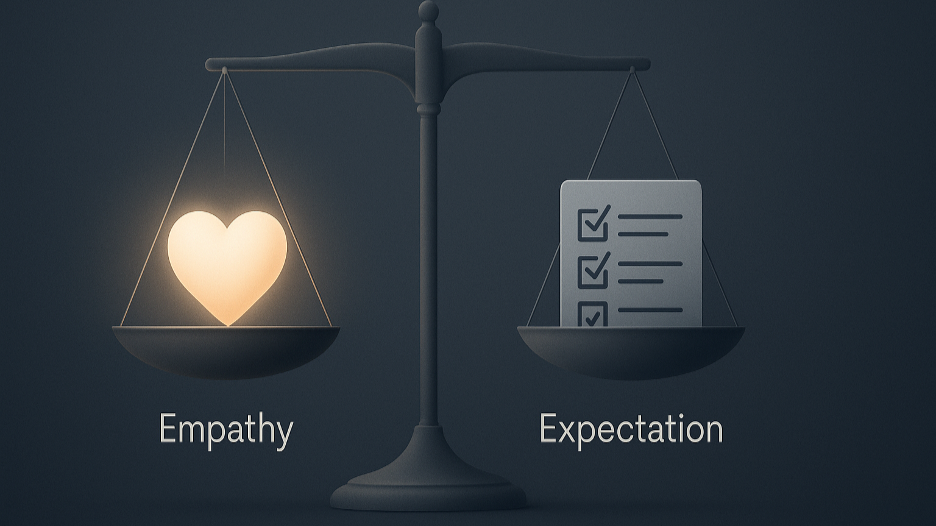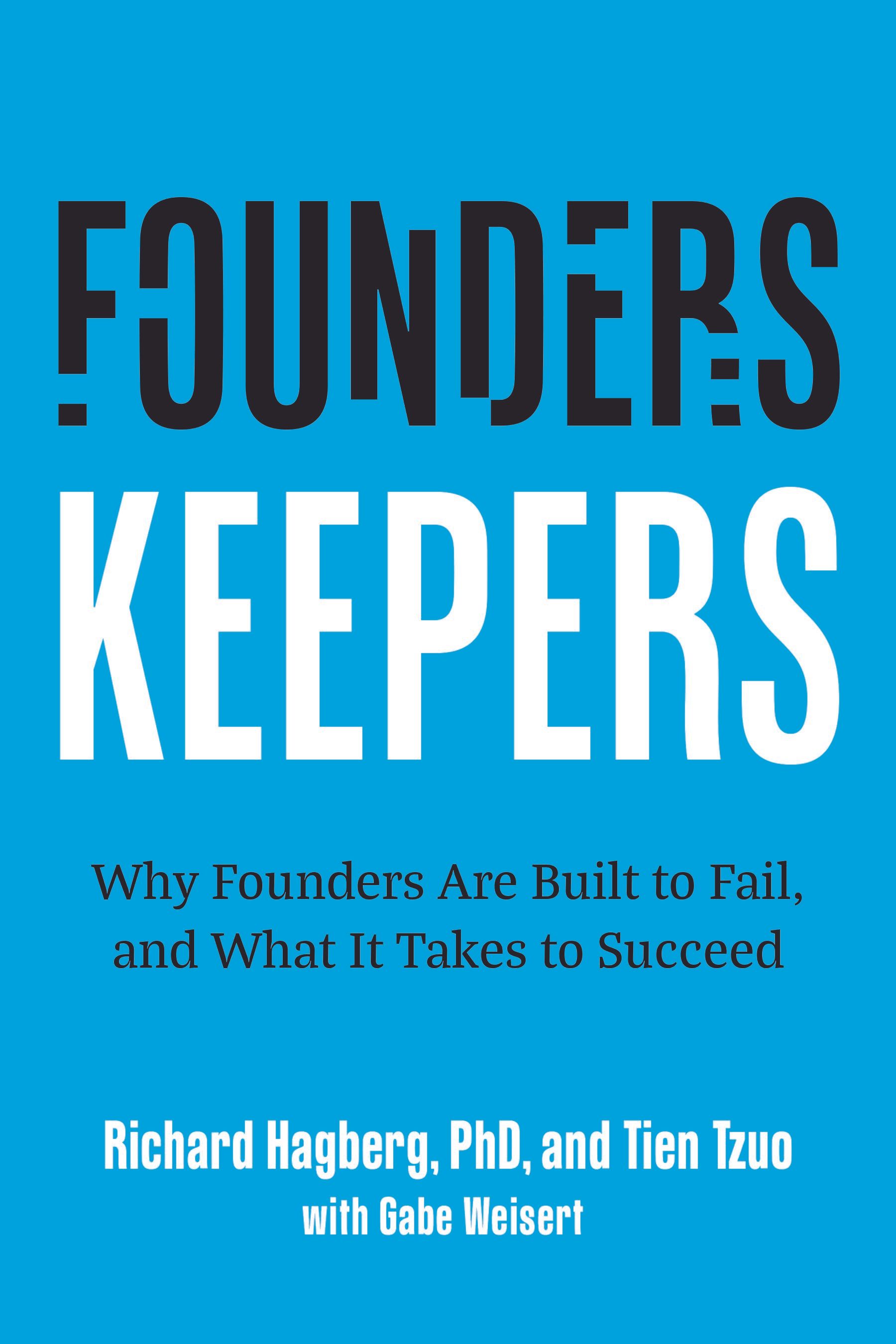Article
Is it time to upgrade your team?
August 13, 2020
Building on each other’s experience and expertise, teams can rise higher than a single individual can.

Surround Yourself with Knowledgeable and Experienced People
Effective leaders surround themselves with people who have technical and functional expertise. Like the cabinet of a president or prime minister or the military’s top level “joint chiefs of staff,” the best leaders create a powerhouse team of experts to advise and support their leadership. This doesn’t happen overnight; it requires you to continuously upgrade your team. Unfortunately, some of the early founding team members may not have the necessary skill and expertise to remain in their original role.
“The hardest thing to get right in every company isn’t the products but the people,” said John Chambers, former CEO of Cisco. So, it’s vital that the leader hire and empower a senior team that has expertise in key domains and then learn to value and listen to their views and utilize their insights.
Effective leaders need to augment their leadership style with people who complement their strengths and offset their weaknesses. To do this right, leaders must be honest and objective in assessing their limitations and stylistic tendencies.
“Lisa is a wonderful team-builder. We're lucky to have someone so adept at seeing each team member's skills, putting them to good use, and helping the team understand how best to work with each other.”
So it is critical to hire and empower people you can trust, who have experience and expertise you can learn from. Choose people with expertise in many different domains and let them lead those teams and functions. Select team members based on their technical, functional, problem-solving and interpersonal skills or on their potential for growth. They may come from varied backgrounds and have different styles but share a common set of values that make them fit in and enrich the culture of the team and the evolving organization.
TIP: Avoid hiring people you can control who will not challenge your point of view and may confirm your bias. Rather than thinking short-term and filling key slots with junior people who will be over their heads in a short time, hire people who are smarter and more experienced than you are and who can scale with the company. “The best leaders know that their employees know more than they do.” – Simon Sinek
It’s also best not to overdo hiring people just because they have degrees from prestigious schools and you assume, they have a high level of intelligence and lots of motivation. They may also have little experience and functional or domain knowledge. Without experience they may not have the framework to understand problems and won’t recognize patterns and errors that lead to serious mistakes and poor judgment. Experienced executives have models and pattern recognition to help them quickly spot problems and solutions rather than having to reinvent the wheel. Furthermore, don’t confuse personal ambition with achievement drive. Overly ambitious people are often poor team players.
One of my clients was growing rapidly and having great difficulty recruiting top technical talent. The recruiting organization had grown substantially but was not getting results and was having numerous internal and external problems. The CEO decided that his current VP of People (Human Resources) didn’t have the necessary skills to systematically manage and grow the recruiting team. He decided to move one of his executives from an operational position to head up the human resource organization because she was an outstanding project manager, a tough and disciplined taskmaster, and he hoped she would bring the structure, rigor and discipline that was necessary. The problem was that she had no HR experience and had poor people skills. It did not work out well, and within six months she was replaced by a seasoned HR executive. I’ve seen this story repeated many times.
Value the Contributions of all team members
To have a true “team” rather than just a collection of individuals, members need to value each other’s unique skills and contributions and appreciate the importance of each member’s role. As the leader, it is up to you to model this team spirit in your behavior and promote a team culture that exemplifies it.
How do you do this? When you show interest in a member’s activities and initiatives, openly express appreciation for the person’s efforts and achievements, it is obvious to everyone that the leader values that member’s contribution. Everyone is watching.
Many leaders tend to directly or indirectly show a preference for certain functions, teams, employee groups or areas of expertise. For example, in technical companies, the CEO often clearly values Engineering or Product over other functions. This results in the leader paying more attention to the views and recommendations of certain team members and listening more to their input in meetings. Whatever your background, personal preferences and predilections, try to be even-handed toward all functions and teams. In meetings, particularly those that involve strategic decision-making, it is important for the leader to include a wide variety of people, and actively draw out their ideas and opinions.
Clarify Roles and Responsibilities
Roles define individual responsibilities for successful operation of the team. Lack of role clarity is one of the causes of conflicts, confusion, and inefficiency on teams. Ideally, you want the team to function as an interdependent, coordinated unit whose members interact creatively and harmoniously.
Clearly defined roles promote efficiency. When the leader doesn’t make roles and responsibilities clear or designate who is responsible for and has ownership of specific projects and decisions, then power struggles and border skirmishes result. So if you are the leader, it’s important to define people’s roles or there will be battles over turf and authority, and chances are good that you will ultimately be called on to adjudicate!
Clear boundaries and assigned areas of authority are the key. For the team to function at maximum capacity, members need to understand not only their own, but also each team member’s roles and responsibilities. Consider creating an enhanced org chart that everyone can refer to, that defines the roles, responsibilities, deliverables, and decision authority of each team member. And be sure to update the chart as the organization grows and roles and responsibilities expand and shift.
In every company and team, there are both formal and informal roles. Formal roles involve designating who is responsible for doing what, sometimes accompanied by a title or a job description. On the other hand, informal roles are roles that people spontaneously take on, based on their personality, skills and style, and what problems need to be resolved.
For example, the question may arise, Who is going to be the person we go to when we have execution issues? Often there is someone on the team who is super organized and knows how to get things done, so this person becomes the go-to person for execution questions. Or there may be a person who has deep customer insights or knowledge of current technology trends or has their finger on the pulse of the morale of the engineering team. Often these informal roles can play a valuable part in improving the quality of understanding of problems or critical decisions.
Give High Powered Team Members Independence
Give team members autonomy – when they have earned it. Be sure to give team members the autonomy they want and need, particularly those who have demonstrated that they have good judgment and know what they are doing. “Barry does a great job of granting autonomy and at the same time making people feel like they are really part of a team, not just a worker”.
But be careful: some confident individuals may expect to have freedom and independent decision-making authority before they are actually ready and have demonstrated competence and good judgment. Their exaggerated self-confidence and personal ambition may cause them to overestimate their capabilities. They may not know what they don’t know. As the saying goes, “He was not always right but he was never in doubt.”
Discourage dependence. Other team members, who may be less experienced or less confident, will often overly rely on the leader to tell them what to do. This second type can become dependent, looking to management and leadership for guidance and direction even in small matters, and will have difficulty making the transition to independent decision making as the company grows. Discourage this kind of co-dependent relationship; it will eat up your time and will prevent followers from operating as true partners and leaders in their own right.
Over-controlling, narcissistic leaders don’t develop other powerful leaders, whom the organization needs in order to scale effectively. As much as possible, once people have demonstrated good judgment and their ability to get results, give them more independence and more decision-making authority. They need to know what is expected of them, but once they prove themselves, let talent find their own way to get results. Their mistakes can be learning opportunities and if you coach them properly, these need not be fatal mistakes. Micromanagement leads to decision bottlenecks, frustration, poor morale, and ultimately to executive turnover.
share this
Related Articles
Related Articles

The Nicest Boss in the World He was adored. He remembered birthdays, checked in on people’s families, and stayed late helping fix slides no one asked him to touch. His team called him “the best boss we’ve ever had.” He was also running on fumes. Behind the warm smile was a leader quietly burning out — drowning in everyone else’s problems, too empathetic for his own good. If you’re a leader who prides yourself on caring deeply, this might sting a little: empathy, taken too far, becomes control in disguise. Empathy’s Secret Shadow Empathy is essential for leadership. It builds loyalty, safety, and trust. But the same trait that makes people feel seen can also make them dependent. When you can’t tolerate someone else’s discomfort, you start protecting them from it. You step in to fix, to soothe, to rescue. It looks noble. It feels generous. But it quietly steals agency — theirs and yours. Your team stops growing because you’re doing their emotional labor. You stop leading because you’re managing feelings instead of outcomes. That’s the hidden cost of care. The Emotional Guilt Loop Over-empathetic leaders live in a constant tug-of-war between compassion and guilt. They think: “They’re already stretched — I can’t pile more on.” “If I push harder, I’ll seem uncaring.” “I’ll just do it myself; it’s easier.” Sound familiar? That’s not empathy anymore. That’s guilt masquerading as kindness. And guilt makes terrible business decisions. Because guilt doesn’t guide you toward what’s right. It just steers you away from what feels uncomfortable. A Founder’s Story One founder I coached, let’s call her Lina, led with heart. She built her company around “people first.” And she meant it. But somewhere along the way, “people first” turned into “me last.” She couldn’t say no. She kept saving underperformers, approving vacations during crunch time, rewriting others’ work to spare them stress. Her team adored her — until they didn’t. Because beneath her helpfulness was quiet resentment. And resentment always leaks. The breakthrough came when she realized something simple but hard: “I was protecting people from learning the hard parts of growth.” That’s when she started leading again instead of parenting. When Caring Becomes Control Here’s the paradox: the more you care, the more you risk over-controlling. You jump in to fix not because you don’t trust them, but because you feel for them. It’s empathy turned inward — I can’t stand watching them struggle. But leadership isn’t about eliminating discomfort. It’s about using it wisely. People grow by stretching, not by being spared. When you save someone from every failure, you’re also saving them from competence. The Biology of Burnout Chronic empathy triggers chronic stress. When you absorb other people’s emotions all day, your nervous system never gets a break. You start mirroring everyone’s anxiety like an emotional amplifier. Your brain thinks you’re in crisis — even when you’re not. That’s why over-caring leaders are often the first to burn out. Their compassion becomes constant cortisol. The irony? The leaders who want to create safety for others end up unsafe themselves. How to Care Without Carrying Feel, then filter. It’s okay to feel someone’s frustration. Just don’t keep it. Ask: “Is this mine to hold?” Help through accountability. Say, “I know this is tough, and I also need you to take ownership.” The and matters. Let discomfort be developmental. When a team member struggles, resist rescuing. Stay present, not protective. Coach before you comfort. Instead of “Don’t worry,” try, “What do you think your next move is?” Reframe empathy as empowerment. Caring isn’t about absorbing pain; it’s about believing people can handle it. Funny but True One exec I worked with told me, “Every time I stop helping, I feel like a jerk.” I said, “No — you feel like a leader. It just takes a while to tell the difference.” He laughed and said, “So… you’re telling me leadership feels bad at first?” I said, “Exactly. Growth always does.” The Cultural Ripple Effect When leaders overfunction, teams underfunction. When leaders hold space instead of taking space, teams rise. Empathy should expand others, not consume you. The healthiest cultures balance care and candor — support and stretch. They normalize struggle as part of the process instead of something to be hidden or rescued. That’s what real compassion looks like in motion. The Maturity of Tough Empathy Empathy without boundaries is exhaustion. Empathy with boundaries is wisdom. The mature version of empathy doesn’t say, “I’ll protect you.” It says, “I believe you can handle this — and I’ll walk beside you while you do.” That’s not cold. That’s developmental. Your Challenge This Week Notice where you’re rescuing someone instead of coaching them. Pause before you step in. Ask yourself, Am I helping because they need it — or because I need to feel helpful? Then take one small risk: let them handle it. They’ll probably surprise you. And you’ll feel lighter than you have in months. Final Word Caring is beautiful. It’s what makes you human. But unchecked empathy turns leaders into emotional pack mules — carrying what was never theirs to bear. Real leadership is still full of heart. It just remembers that compassion without accountability isn’t love. It’s fear. And the moment you stop rescuing everyone, you finally start freeing them — and yourself.

The Smart Leader’s Blind Spot It’s strange how often the smartest people make the worst decisions under pressure. They don’t lose IQ. They lose perspective. I’ve seen this happen more times than I can count. A sharp, decisive executive starts second-guessing every move. They overanalyze, overwork, and overcontrol — all in the name of being “thorough.” They think they’re being rational. But underneath the spreadsheets and meetings is something far less logical. It’s fear. The Fear That Doesn’t Look Like Fear We think of fear as panic — sweating, shaking, obvious. But most leadership fear hides behind competence. It shows up as perfectionism, busyness, overcommitment, indecision. It sounds like, “Let’s get more data.” “Let’s not rush this.” “Let’s keep this one close.” That’s not analysis. That’s avoidance with a better vocabulary. When fear runs the show, the goal subtly shifts from making the right decision to avoiding the wrong one. And those two things are worlds apart. The Cost of Fear-Based Leadership When leaders operate from fear, everything tightens. They stop listening. They rush to defend. They play small when the company needs boldness. They keep people who are loyal over people who are competent — because loyalty feels safer. And here’s the real tragedy: the team starts copying the fear. They become cautious, compliant, quiet. Pretty soon, no one’s leading anymore. They’re all managing risk — mostly emotional risk. A CEO’s Moment of Truth One CEO I coached — brilliant, confident, deeply human — was terrified of being wrong in front of his board. He masked it well. On the outside: decisive. Inside: a constant hum of anxiety. After a tough quarter, he admitted, “I realized half my decisions weren’t based on strategy — they were based on protecting my image.” That moment of honesty was the start of his maturity curve. Once he could name the fear, it stopped running his show. He didn’t become fearless. He became aware. And awareness is what turns reaction into wisdom. Why Fear Feels Safer Than Clarity Fear has a strange way of convincing us it’s caution. Caution whispers, “Slow down and look.” Fear screams, “Don’t move.” The first sharpens judgment. The second paralyzes it. And the more we listen to fear, the more it disguises itself as prudence. That’s why emotional maturity isn’t about suppressing fear. It’s about being able to say, “Ah, that’s fear talking — not fact.” How Fear Distorts the Mind Here’s what happens when fear hijacks leadership: Tunnel vision: You fixate on the immediate threat and forget the big picture. Confirmation bias: You start looking for data that validates your anxiety. Short-termism: You make safe decisions that feel good now and cause pain later. Blame shifting: You protect your ego by pushing ownership outward. The mind gets smaller. The leader gets reactive. The company gets stuck. The Maturity Shift Emotional maturity isn’t about being unshakable. It’s about staying curious in the presence of fear. Mature leaders don’t pretend they’re fearless. They just don’t let fear make the decisions. They pause, breathe, and ask, “What part of this is data, and what part is my insecurity talking?” That single question can change everything. A Founder’s Story A founder I worked with once said, “I’m not afraid — I just have high standards.” But as we unpacked it, he realized those “high standards” were actually a way to control outcomes. He feared disappointment — his own and others’. When he finally stopped trying to protect his reputation and started protecting his clarity, his decisions got faster and cleaner. The business didn’t just grow — it started breathing again. Because when you stop trying to look right, you finally have room to be right. Funny, But True I once asked a CEO what he’d do differently if he weren’t afraid of failing. He said, “Probably the same things I’m doing now — just with less Advil.” That’s the thing: most leaders already know what to do. Fear just makes it hurt more. How to Lead Without Fear (Even When It’s There) Name it early. The sooner you recognize fear, the less power it has. Ask yourself, “What’s the story fear’s telling me right now?” Reframe mistakes as tuition. You’ll still pay for errors — might as well learn something from them. Separate identity from outcome. A bad decision doesn’t mean a bad leader. It means a leader who’s still learning — like everyone else. Keep one truth-teller nearby. Someone who loves you enough to tell you when you’re acting from ego. Practice micro-bravery. Tell one hard truth a day. Say “I don’t know” once a week. Let discomfort become strength training. The Paradox of Fear Fear doesn’t make you weak. It means you care. But if you never face it, it becomes your compass — and it always points backward. Courage, maturity, clarity — they’re not opposites of fear. They’re what happen when you stop running from it. Your Challenge This Week Next time you feel that knot in your stomach — before a board meeting, a tough conversation, a high-stakes call — pause. Ask yourself: What am I afraid might happen? Then ask: What might happen if I act from clarity instead of fear? That’s not therapy. That’s leadership hygiene. Final Word The mark of maturity isn’t fearlessness. It’s self-awareness. You can’t control your fear. But you can choose whether it sits in the driver’s seat or the passenger’s. Great leaders don’t wait for fear to disappear. They lead with it beside them — quietly, respectfully — but never in charge.

The Overworked Hero Syndrome You can spot this one a mile away. They’re running at 120%, inbox exploding, calendar packed like a game of Tetris. They tell themselves it’s noble — “The team’s counting on me.” But deep down, it’s addiction. I know this pattern because I’ve lived it. That little rush you get when someone says, “We couldn’t do this without you”? That’s the dopamine hit of leadership ego. Feels good. Until it doesn’t. Because being indispensable isn’t a compliment. It’s a warning. Why Smart People Struggle to Let Go Most leaders don’t hoard work because they’re bad at delegation. They hoard because delegation threatens their identity. If your sense of worth comes from being the fixer, the doer, the one who “always delivers,” letting go feels like erasure. Who are you if you’re not in every meeting? Who are you if things go fine without you? That’s the emotional root of overwork — not competence, but fear of irrelevance. Control in Disguise Delegation looks like an operational skill, but it’s really emotional work. Leaders tell me all the time: “I can’t delegate — my team’s not ready.” What they mean is: “I can’t delegate — I’m not ready.” The truth is, your people won’t become ready until you give them the chance. That’s the brutal math of leadership: you can have control, or you can have scale. You don’t get both. A Founder’s Story A founder I coached — let’s call her Sara — ran her company like a benevolent tornado. She did everything: strategy, hiring, investor calls, even reviewing design files “just to make sure the tone was right.” When she came to me, she was working 80-hour weeks and quietly resenting everyone she was “helping.” I asked, “What would happen if you stopped fixing things for people?” She said, “They’d drop the ball.” Six months later, she tested it. She handed off a project completely — no shadow-managing, no emergency check-ins. Her team nailed it. She said, “I didn’t realize they were this capable.” I said, “They didn’t realize you were this controlling.” We both laughed — but she got the point. The Real Meaning of Delegation Delegation isn’t a time-management trick. It’s a transfer of trust. It says, “I believe you can handle this — even if you don’t do it exactly my way.” It’s also a developmental gift. When you delegate fully, you don’t just lighten your load — you level someone up. Delegation is how leaders stop being the engine and start being the architect. The Fear Behind “It’s Easier If I Just Do It” That sentence might as well be carved on the tombstone of burned-out executives everywhere. Sure, doing it yourself feels faster. But every time you do, you quietly train the organization to need you. You build a culture of dependence — and then complain that people don’t take initiative. Delegation feels risky because it is. You will lose control of how something gets done. But you gain something far more valuable: time to lead, not just manage. Funny but True I once told a CEO, “If you died tomorrow, who could run your company?” He said, “That’s morbid.” I said, “No — that’s planning.” He got the message. A few months later, he’d built a real leadership team for the first time. He told me, “It’s weird — I’m working less, and everything’s better.” That’s not weird. That’s delegation done right. How to Build the Trust Muscle Start small, but mean it. Hand off one real decision — not a token task. Resist the urge to check back in “just to see how it’s going.” Define success, not the path. Set the destination clearly, then step back. They’ll probably surprise you with how differently — and often better — they get there. Coach after, not during. Let people own outcomes before you give feedback. Growth requires a little space to fail safely. Reward initiative, not imitation. If you only praise people for doing things your way, you’ll never build leaders — only clones. Say thank you — and mean it. Appreciation is the emotional contract that makes delegation sustainable. The Emotional Reframe Delegation isn’t about trust in others. It’s about trust in yourself — in the system you’ve built, in your ability to recover from other people’s mistakes, and in your willingness to be unnecessary. That last one’s the hardest. But when you finally stop trying to be irreplaceable, your company starts becoming unstoppable. Your Challenge This Week Write down everything on your plate. Circle three things that drain you but could teach someone else something valuable. Pick one and delegate it — completely. Then, when the urge to “check in” hits, take a walk instead. Let them own it. When it works — and it will — tell them. Celebrate it. Because that’s how trust compounds. Final Word Letting go doesn’t make you weaker. It proves you’re strong enough to lead without needing to control. Every founder eventually faces the same test: can you stop being the engine and start being the ecosystem? The day you say yes, you stop leading through force and start leading through faith. That’s not surrender. That’s courage.


